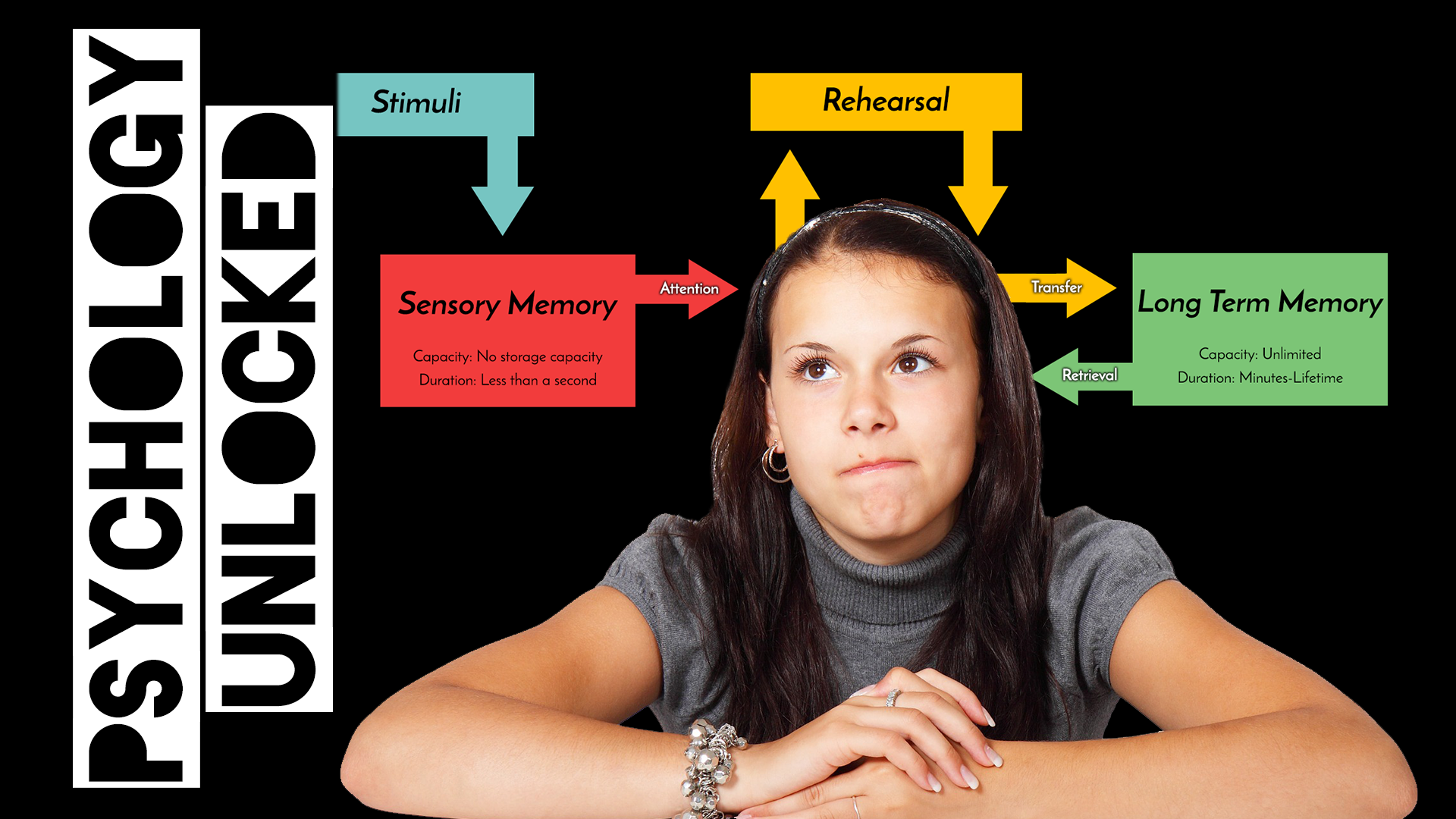
SCROLL DOWN FOR VIDEO
Atkinson and Shiffrin provided a key memory model to the field of Cognitive Psychology in 1968.
Their model was originally called the Two Process Model, then the Three Process Model, and now more widely known as the Multi-Store Model of Memory.
The model is known as the multi-store model quite simply because it refers to multiple memory stores: sensory memory, short term memory, and long term memory.
The processes highlighted in the model are:
Attention – to move information from Sensory to Short Term Memory (STM)
Rehearsal – to move information from Short Term Memory (STM) to Long Term Memory (LTM)
Retrieval – to move information back into the Short Term Memory (STM) from the Long Term Memory (LTM).
Whilst many aspects of the model have now been superseded by new models and theories, this model is an important model to be familiar with and understand because of its importance in the development of research on memory.
The key strengths of this model are that it is simple to understand and easy to empirically test – this has paved the way for a huge literature of research on memory.
The limitations of the model largely surround it’s over-simplicity – whilst the three memory store mentioned are widely accepted to exist, subsequent research suggests that there are levels of detail and nuance that this model does not account for.
Read the full original paper here: http://apps.fischlerschool.nova.edu/toolbox/instructionalproducts/edd8124/fall11/1968-Atkinson_and_Shiffrin.pdf
